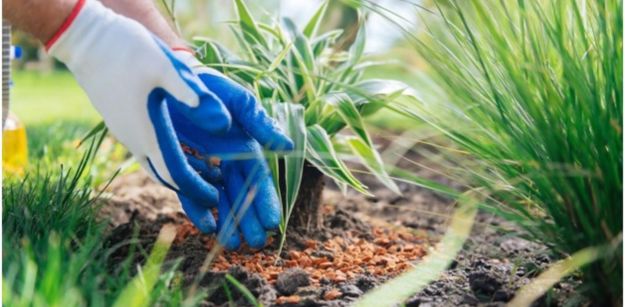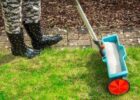When it comes to gardening, mulch is like the unsung hero of the landscape. It may not be the showiest element in your garden, but it plays a crucial role in promoting healthy growth and a bountiful harvest. If you’re looking to create a thriving vegetable garden, choosing the right mulch is essential.


This comprehensive guide recommends the best mulch options for your vegetable garden, their benefits, and how to apply them effectively to ensure your garden flourishes.
Choosing the Right Mulch for Your Vegetable Garden
1. Straw
Straw is a popular mulch choice for vegetable gardens for several reasons. It’s readily available, affordable, and easy to work with. Here’s why straw might be the right choice for your garden:
- Moisture Retention: Straw creates a thick, insulating layer that helps retain soil moisture, keeping your plants hydrated during dry spells.
- Weed Suppression: Straw effectively blocks sunlight and prevents weeds from sprouting. Just be sure to lay it down thick enough to do the job.
- Temperature Regulation: Straw provides excellent insulation, keeping the soil cooler in hot weather and warmer in cold weather.
- Soil Enrichment: As straw decomposes, it adds organic matter to the soil, improving its fertility over time.
To use straw as mulch, spread a layer 3-6 inches deep around your vegetable plants. Ensure it’s not packed too tightly to allow for airflow.
2. Wood Chips or Bark Mulch
Wood chips or bark mulch can give your vegetable garden a neat appearance while providing numerous benefits:
- Moisture Retention: Wood chips and bark mulch help retain moisture in the soil, reducing the need for frequent watering.
- Weed Suppression: Like straw, wood chips and bark mulch create a barrier that prevents weeds from taking root.
- Temperature Regulation: They insulate the soil, protecting it from extreme temperatures.
- Longevity: Wood-based mulches tend to break down more slowly than organic options like straw so that they can last longer.
When using wood chips or bark mulch, spread a layer about 2-4 inches deep around your vegetable plants. Be cautious not to pile it up against the plant stems, as this can create a moist environment that encourages rot.
3. Compost
Compost is a fantastic mulch for your garden, as it offers both mulching and soil improvement benefits:
- Nutrient-Rich: Compost is teeming with readily available nutrients to your plants, promoting healthy growth.
- Weed Suppression: Compost can effectively suppress weeds by smothering them when applied as a thick layer.
- Moisture Retention: Compost helps the soil retain moisture and creates a favourable environment for beneficial soil microorganisms.
- Soil Enrichment: Over time, compost breaks down and adds valuable organic matter to the soil, improving its structure and fertility.
When using compost as mulch, apply it in a layer about 1-2 inches deep. Be mindful not to bury your plants’ stems.
4. Grass Clippings
If you’re looking for a free and eco-friendly mulch option, consider using grass clippings from your lawn:
- Moisture Retention: Grass clippings help lock in soil moisture, reducing the need for watering.
- Weed Suppression: When applied in a thick layer, grass clippings can effectively smother weeds.
- Nutrient Recycling: Grass clippings contain nitrogen, which can be released slowly into the soil as they decompose, providing an additional source of nutrients for your plants.
To use grass clippings as mulch, spread a layer 1-2 inches deep around your vegetable plants. Be cautious not to use clippings from lawns treated with herbicides or pesticides.
5. Leaves
Leaves are another readily available and accessible mulch option that can work wonders in your vegetable garden:
- Moisture Retention: Leaves form a natural barrier that helps retain soil moisture.
- Weed Suppression: When applied in a thick layer, leaves prevent weed growth by blocking sunlight.
- Soil Enrichment: As leaves break down, they add organic matter and nutrients to the soil, enhancing its fertility.
Leaves can be used as mulch by shredding them with a mower and spreading a layer 2-3 inches deep around your vegetable plants. Be aware that whole leaves can mat together and limit water infiltration.
Mulching Tips for Success
1. Prepare the Soil:
Before mulching, make sure your soil is weed-free and well-hydrated. Adding any necessary soil amendments, such as compost or organic fertiliser, is also a good idea to ensure your plants have access to essential nutrients.
2. Apply the Right Amount:
Please don’t overdo it with mulch. The recommended depth for most mulches is around 2-4 inches. Applying too much mulch can prevent water from reaching your plants’ roots and may lead to fungal issues.
3. Keep the Mulch 3cm from the Stem:
Avoid putting mulch so near the stem bases of your vegetable plants. This can create excessive moisutre that promotes rotting and diseases. Leave a small gap around the base of each plant.
4. Mulch Regularly:
Mulch can break down over time, so it’s a good idea to replenish it as needed. Check your mulch layer periodically and add more if it has thinned out.
5. Water Properly:
Mulch helps retain moisture, but monitoring soil moisture levels is essential. Water your vegetable garden when needed, but be mindful not to overwater, which can lead to root rot.
6. Consider Organic Mulch:
Organic mulches, like straw, wood chips, compost, grass clippings, and leaves, enrich the soil as they decompose. They’re an excellent choice for sustainable gardening.
Choosing the best mulch for your vegetable garden is a vital decision that can significantly impact your gardening success.
If you’re looking for the best mulch for your garden, visit or call Mazzega’s Landscaping Supplies. Their experts can recommend what suits your garden the best!



